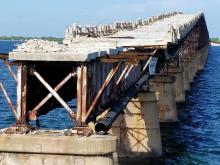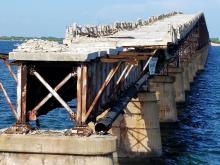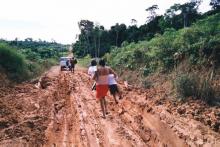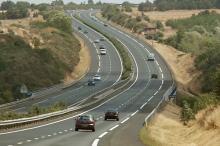A new road design can improve local water supplies. A new road design could help mitigate heavy flooding during rainy seasons and alleviate water shortages in dry periods. This innovative concept is a winner in the IRF’s Global Road Achievement Awards, in the Environmental Mitigation category. Road designs often exacerbate issues arising from heavy rainfall. However, a new initiative is making roads instruments for harvesting wate and for improving land productivity along the roads. The Roads for Water and
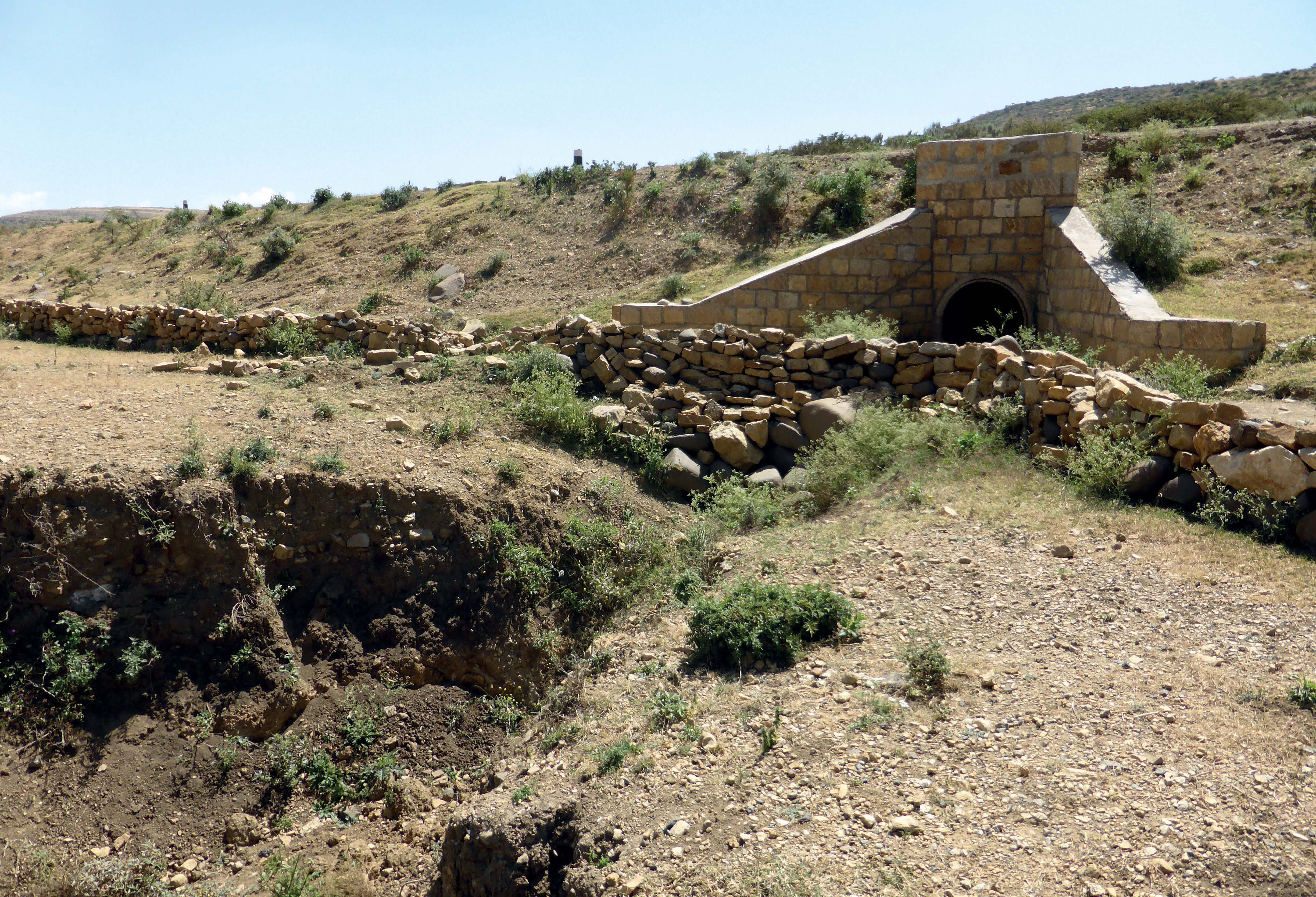
Road flood water spreaders divert water to fields
A new road design can improve local water supplies
Road designs often exacerbate issues arising from heavy rainfall. However, a new initiative is making roads instruments for harvesting wate and for improving land productivity along the roads. The Roads for Water and Resilience consortium, led by MetaMeta, has worked for two years to develop new road concepts that, rather than draining water away, capture water around roads. This helps reduce flooding and erosion while providing more water for agriculture. The innovative road design approach develops an untapped resource that will help deliver climate resilience in the Horn of Africa and will help in tackling food shortages currently experienced by the 70 million or so people living in areas prone to extreme food shortages.
The Global Resilience Partnership is an initiative of The Rockefeller Foundation, the United States Agency for International Development (USAID) and the Swedish International Development Cooperating Agency (Sida). It focuses on bringing together people and organisations from across sectors to collaborate on bold and innovative solutions to the toughest resilience challenges in the Horn of Africa, the Sahel, and South and Southeast Asia. The Roads for Water and Resilience consortium was among the 17 teams (from the nearly 500 applications) selected to move on to Stage Two of the Global Resilience Challenge, the first activity of the Global Resilience Partnership. The Global Resilience Challenge is a three-stage competitive grant process aimed at combating acute shocks and chronic stresses in regions across the Sahel, the Horn of Africa, and South and Southeast Asia.
According to the project partners, the potential of road building to contribute to the up-scaling of climate resilience measures is enormous. Annual direct investments to improve road infrastructure in the Horn of Africa amount to nearly US$4 billion. At present the focus in road-building is to protect roads from waterrelated damage. In work carried out previously in Tigray (Ethiopia), the team discovered that in each 100km of roads there were typically about 130 problem spots. These can be water logging and flooding caused by road alignments, severe erosion from culverts and houses and land destroyed by road floods.
But by using different methods, roads and the related infrastructure can be changed into structures that can retain, spread and re-route water for local water harvesting. This reduces the vulnerability of transport links to seasonal rainfall while also delivering better livelihoods for those living alongside rural roads.
This can be achieved at no additional cost during construction and can over time deliver greater savings due to lowered maintenance needs by reducing water-related damage to roads. This new system requires changes to established working methods and the implementation of new concepts such as the reuse of borrow pits, water harvesting from culverts and side-drains, fords as sand-dams, spring capture and water spreaders.
These new processes and measures have been tested with success in parts of the Tigray Region in Ethiopia, where in one year more than 200 successful water-harvesting activities were undertaken in all districts. Having proven successful, this concept can now be further tested and up-scaled.
Research conducted in Tigray in Ethiopia showed that the implementation of road waterharvesting structures improved land productivity in 2014 to the highest level in five years, despite this being a year of relatively low rainfall. The studies showed that some 1.3 million m3 of water could be recovered from a 50km stretch of road.
In addition, using the new road waterharvesting activities increased groundwater levels, improved soil moisture and contributed to a more stable micro-climate. At present 14 countries in Africa currently suffer an acute water shortage and this situation is being further aggravated by climate change. Clearly, gathering water from road networks provides major benefits for countries like Ethiopia. There are many road water-harvesting options, including several low-cost measures that are currently unused but can contribute importantly to water security and reduce landscape degradation.
For example, borrow pits constructed originally to provide materials for roadconstruction purposes can be used as waterharvesting facilities. At one site in Axumarea, Tigray, Northern Ethiopia, the road embankment is now used as an earth dam and the borrow pit as a reservoir. The pit measures some 250m long by 80m wide, and has a maximum depth of 15m. It acts as a reservoir and water is recharged from road surface run-off and run-off from the adjacent areas. The pit is used for small-scale irrigation (using pumps) and for shallow ground water recharging in the area.
In other areas, the use of percolation pits alongside dirt roads can capture water run-off and help replenish groundwater levels, reducing the risk of ground becoming parched during hot periods. Simple road flood water spreaders allow run-off to be diverted for agricultural purposes, which is of particular importance in rural areas reliant on small-scale farming.
Team players
Roads for Water and Resilience comprises: MetaMeta Ethiopia; MetaMeta Research and ASAL Consultants (private sector); Mekelle University and the Institute for Development Studies; the Tigray Construction, Road and Transport Bureau (TCRTB) and Amhara Regional Bureau of Agriculture and Rural Development (ARBARD) (two regional governments); and the Ethiopian Roads Authority.
A new road design could help mitigate heavy road flooding during rainy seasons and alleviate general water shortages in dry periods.
This innovative concept is a winner in the IRF’s Global Road Achievement Awards, in the Environmental Mitigation category.Road designs often exacerbate issues arising from heavy rainfall. However, a new initiative is making roads instruments for harvesting wate and for improving land productivity along the roads. The Roads for Water and Resilience consortium, led by MetaMeta, has worked for two years to develop new road concepts that, rather than draining water away, capture water around roads. This helps reduce flooding and erosion while providing more water for agriculture. The innovative road design approach develops an untapped resource that will help deliver climate resilience in the Horn of Africa and will help in tackling food shortages currently experienced by the 70 million or so people living in areas prone to extreme food shortages.
The Global Resilience Partnership is an initiative of The Rockefeller Foundation, the United States Agency for International Development (USAID) and the Swedish International Development Cooperating Agency (Sida). It focuses on bringing together people and organisations from across sectors to collaborate on bold and innovative solutions to the toughest resilience challenges in the Horn of Africa, the Sahel, and South and Southeast Asia. The Roads for Water and Resilience consortium was among the 17 teams (from the nearly 500 applications) selected to move on to Stage Two of the Global Resilience Challenge, the first activity of the Global Resilience Partnership. The Global Resilience Challenge is a three-stage competitive grant process aimed at combating acute shocks and chronic stresses in regions across the Sahel, the Horn of Africa, and South and Southeast Asia.
According to the project partners, the potential of road building to contribute to the up-scaling of climate resilience measures is enormous. Annual direct investments to improve road infrastructure in the Horn of Africa amount to nearly US$4 billion. At present the focus in road-building is to protect roads from waterrelated damage. In work carried out previously in Tigray (Ethiopia), the team discovered that in each 100km of roads there were typically about 130 problem spots. These can be water logging and flooding caused by road alignments, severe erosion from culverts and houses and land destroyed by road floods.
But by using different methods, roads and the related infrastructure can be changed into structures that can retain, spread and re-route water for local water harvesting. This reduces the vulnerability of transport links to seasonal rainfall while also delivering better livelihoods for those living alongside rural roads.
This can be achieved at no additional cost during construction and can over time deliver greater savings due to lowered maintenance needs by reducing water-related damage to roads. This new system requires changes to established working methods and the implementation of new concepts such as the reuse of borrow pits, water harvesting from culverts and side-drains, fords as sand-dams, spring capture and water spreaders.
These new processes and measures have been tested with success in parts of the Tigray Region in Ethiopia, where in one year more than 200 successful water-harvesting activities were undertaken in all districts. Having proven successful, this concept can now be further tested and up-scaled.
Research conducted in Tigray in Ethiopia showed that the implementation of road waterharvesting structures improved land productivity in 2014 to the highest level in five years, despite this being a year of relatively low rainfall. The studies showed that some 1.3 million m3 of water could be recovered from a 50km stretch of road.
In addition, using the new road waterharvesting activities increased groundwater levels, improved soil moisture and contributed to a more stable micro-climate. At present 14 countries in Africa currently suffer an acute water shortage and this situation is being further aggravated by climate change. Clearly, gathering water from road networks provides major benefits for countries like Ethiopia. There are many road water-harvesting options, including several low-cost measures that are currently unused but can contribute importantly to water security and reduce landscape degradation.
For example, borrow pits constructed originally to provide materials for roadconstruction purposes can be used as waterharvesting facilities. At one site in Axumarea, Tigray, Northern Ethiopia, the road embankment is now used as an earth dam and the borrow pit as a reservoir. The pit measures some 250m long by 80m wide, and has a maximum depth of 15m. It acts as a reservoir and water is recharged from road surface run-off and run-off from the adjacent areas. The pit is used for small-scale irrigation (using pumps) and for shallow ground water recharging in the area.
In other areas, the use of percolation pits alongside dirt roads can capture water run-off and help replenish groundwater levels, reducing the risk of ground becoming parched during hot periods. Simple road flood water spreaders allow run-off to be diverted for agricultural purposes, which is of particular importance in rural areas reliant on small-scale farming.
Team players
Roads for Water and Resilience comprises: MetaMeta Ethiopia; MetaMeta Research and ASAL Consultants (private sector); Mekelle University and the Institute for Development Studies; the Tigray Construction, Road and Transport Bureau (TCRTB) and Amhara Regional Bureau of Agriculture and Rural Development (ARBARD) (two regional governments); and the Ethiopian Roads Authority.

